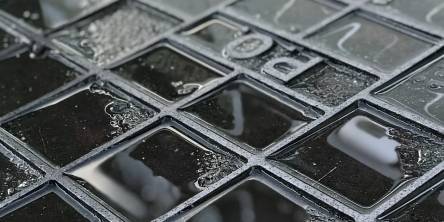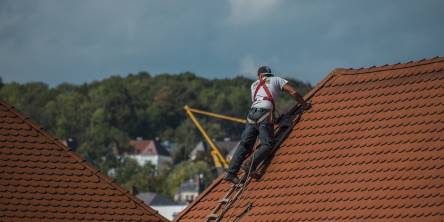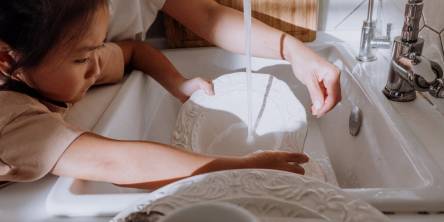Perspex or Acrylic Sheeting for Your Home

In the field of construction, furniture production, and other fields, materials based on polymers, complex high-molecular compounds, are used very often. This group of materials also includes perspex and acrylic. In this article, we will help you figure out what is the main difference between them and what to consider while choosing and purchasing it.
What is perspex?
Perspex is a colourless and transparent polymer made on the basis of poly(methylmethacrylate). It is high-quality plastic. Perspex can be dyed, tinted and, thanks to a wide range of operational features, is widely used in various industries.
Perspex pros
Perspex sheets are gradually replacing ordinary glass, which is used everywhere but has a major significant drawback, such as poor impact resistance or fragility. It is a fairly common and highly demand material that has been produced and used in various fields for 70 years.
Therefore, we will consider in more detail the main pros of using it.
- Lightweight. Perspex is much lighter than ordinary glass. This simplifies the processes of installation and transportation of sheets of material.
- Strength, rigidity. Perspex does not break and does not crumble into small fragments, like ordinary glass.
- Environmental friendliness. Perspex is a safe material, which doesn’t have an impact on human health, it does not emit toxic substances, so it can be used both outdoors and indoors.
- Easy to work with. The material can be milled, cut, sanded even at home.
- Plasticity. During thermal heating, perspex acquires plasticity, which allows you to give it the necessary shape, preserving it after further cooling.
- Soundproofing. Perspex is great for reducing street noise.
- Light transmission. High transmittance (92%) does not change with prolonged use.
- Resistance to temperature changes and changes in weather conditions.
- Does not emit toxic gases. When ignited, it doesn’t emit toxic gases, which can not be said about other types of plastic.
- Moisture resistant.
- Low conductivity.
Perspex cons
Despite the above advantages, perspex has some disadvantages that cannot be ignored:
- Highly flammable.
- Low resistance to mechanical stress. You can easily leave scratches that cannot be removed.
- Instability to certain chemicals. It is better not to wipe perspex with ordinary cleaning products containing alkali, alcohol, acetone. Since this can reduce transparency, lead to cloudiness.
What is acrylic?
Acrylic (acrylic glass) is a polymer plastic based on acrylic acids. Its optical uniqueness lies in the fact that it perfectly imitates translucent glass surfaces, while it does not have their pernicious drawback - fragility.
Pros of acrylic:
- Light transmission.
- Impact resistance.
- Lightweight.
- Easy to cut. You can cut out elements of various configurations, and also give them the necessary shape.
- Low thermal conductivity. The material is able to retain heat.
- Environmental friendliness.
Acrylic has a high level of wear resistance and is easy to clean, which is why acrylic is widely used in the field of bath production, especially since baths made of this material are also hygienic, as they do not accumulate microbial microflora. One of the main pros is that acrylic products don’t lose their original colour and possible scratches are can easily be removed by using sandpaper.
Cons of acrylic:
- Combustibility. It has a low flashpoint.
- Low hardness. The material is easily scratched.
- Local stresses. When bending sheets of material, large stresses arise, leading to difficulties in operation.
The similarities between them
The properties of the materials are very similar to each other. And the difference between them is not significant. A lot of it depends on the manufacturer, the raw materials and special additives used by it, which determines the quality and technical properties that you can see at the manufacturing stage. The main task of the buyer is to get acquainted with the production technology and manufacturer's guarantees in order to not get stuck with a low-quality material.
What are the main differences between perspex and acrylic?
Having understood that there is no particular difference between the materials, it is necessary to find out the main features of the production technology of both.
Depending on the manufacturing method, acrylic glass, having the same chemical composition, may have different properties. There are two manufacturing methods — casting method and extrusion method. For example, the material made by extrusion is more susceptible to high temperatures. And the deformations can occur at a lower temperature than with the second method. The material also has various shrinkage characteristics, so you should have that in mind while choosing.
The choice of material is affected by its scope and its main purpose.
Conclusion
While choosing perspex or acrylic, you are, in fact, choosing between the same materials, but you should focus on the purpose and conditions of use of the finished product since there are varieties of this kind of material with different parameters.
Perspex and acrylic are the best alternatives to ordinary glass. High-quality, reliable, and environmentally friendly products with a multi-year warranty, the properties of which convince us that it can be used for different purposes.
Similar Articles
Learn how a tidy home boosts mental health, reduces stress, improves productivity, and enhances well-being with simple, practical cleaning tips.
Have you ever harboured dreams of constructing your dream home filled with bespoke designs, carefully selected fittings and high-quality finishes? Have you ever fretted over the durability, aesthetics, and overall quality of your construction project? Are you constantly in search for the perfect balance between beauty and strength?
Cockroaches are one of the most common pests found in homes and businesses, and they are known for their resilience and ability to thrive in even the most unsanitary conditions. These pests can quickly infest kitchens, bathrooms, and other areas, spreading bacteria, allergens, and other harmful pathogens.
A well-maintained yard drainage system is key to preserving the beauty and health of any property. Poor drainage can lead to standing water, soil erosion, and even foundational damage to structures over time.
Keep your seaside home in top shape with these 4 expert tips! Learn about weatherproof materials, smart maintenance, and managing coastal challenges effectively.
Explore the future of roofing! Discover energy-efficient materials, smart systems, and sustainable designs reshaping modern home construction trends.
HVAC stands for heating, ventilation, and air conditioning. These all-in-one systems keep your home comfortable and improve air quality throughout a building. Often used in commercial buildings, HVAC units are increasingly used in residential buildings.
Safeguard your home after storms with timely roof repairs. Detect damage early, choose durable materials, and rely on a pro for lasting protection and peace of mind.
Learn how to balance a clean home and family life with these 6 practical tips to manage clutter, involve kids in chores, and set realistic expectations.









